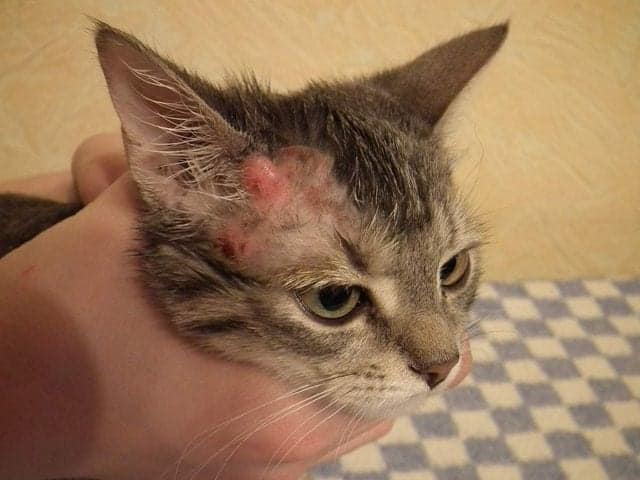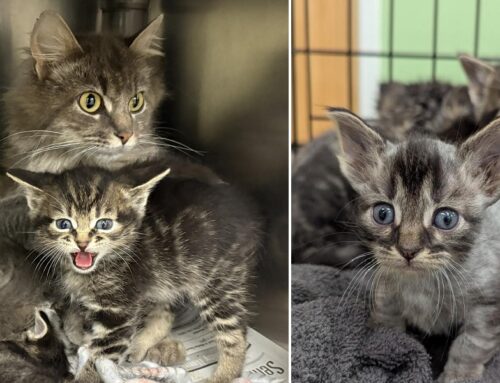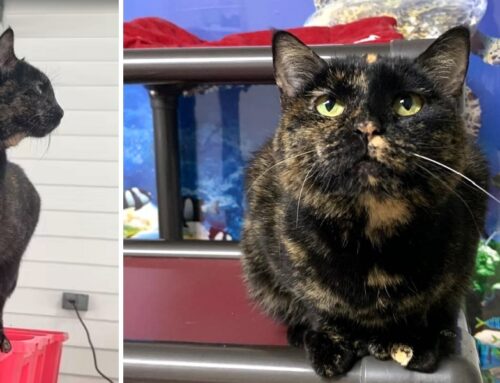To us devoted cat owners, our pet’s health is of the utmost importance to us. We never want to see our cats in pain or think about them suffering in silence. Cat dermatitis is a condition that can affect any cat at any age, and is a major cause of concern for a pet parent wanting to see their cat quickly get better.

The most commonly affected areas in cats include the:
- Ears
- Wrists
- Ankles
- Muzzle
- Underarms
- Groin
- Around the eyes
- In between the toes
A cat that is suffering from dermatitis is prone to neurotically grooming the infected area, or may even chew or scratch it. There are times when the dermatitis becomes raw and scabs, which can also result in hair loss. Hotspots or even ulcers can occur depending on how advanced the cat dermatitis has become. For cats whose ears are affected with dermatitis, they can sometimes produce a foul-smelling odor.
Additional symptoms of feline dermatitis include:
Regardless of the severity, no one wants to see their cat suffer. Read on to learn about the three most common types of dermatitis:
The 3 Most Common Forms of Dermatitis in Cats
Flea-Allergy Dermatitis
Although fleas are a nightmare for any cat owner, flea-allergy dermatitis in cats does have an easy solution. By simply eradicating the fleas, and treating your feline with flea preventative, the issue should resolve on its own.
Flea-allergy dermatitis, from the saliva from flea bites, is very common,” says Aimee Simpson, V.M.D., medical director of VCA Cat Hospital of Philadelphia. “It tends to be more of a seasonal issue that’s worse in the warmer months, but depending on which area of the country you’re living in, that might vary. It’s definitely more of a concern for outdoor cats and indoor/outdoor cats.

The redness around the area of the bite can cause swelling and irritation, but if the fleas are all removed and the home has been declared a flea-free zone once more, the flea-allergy dermatitis should fix itself.
Feline dermatitis can also come as a result of viral, bacterial and fungal infections. See more examples below of infectious causes of dermatitis in cats:
- Parasites, including fleas and mites. Mite infestations and flea allergy dermatitis (FAD) are very common causes of feline dermatitis
- Bacterial infections, which often occur as a secondary disease of damaged skin
- A fungal infection such as ringworm
- A viral infection such as cowpox
Food-Allergy Dermatitis
For a cat that’s experiencing food-allergy dermatitis, this is caused when a cat is allergic to specific proteins found in the food that she is eating. And oddly enough, it’s possible for a cat to develop food allergies at any point in life, even if she has been eating the same food for years with no issues.
Should food be the reason for a cat’s dermatitis, a veterinarian may perform a food trial to assess:
“If we’ve ruled out flea allergy, we can also do a food allergy trial, which involves feeding a cat a special prescription diet,” Dr. Simpson explains. “We usually choose a hydrolyzed protein, which is basically whole proteins that are broken down into pieces that are too small to cause allergic reactions. If we feed only that diet for somewhere between four to 12 weeks, that will help us rule out a food allergy.”
Atopic Dermatitis
This form of dermatitis comes as a result of an allergic reaction to something in their environment. While more common in dogs due to their routine exposure to the outside world, atopic dermatitis is an inflammatory, chronic skin disease associated with allergies. These allergic reactions can be brought on by normally harmless substances like grass, mold spores, house dust mites, and other environmental allergens.

Treatment for Dermatitis in Cats
The first thing you must do when you believe your cat has dermatitis is to schedule them for a medical examination with their veterinarian. In the meantime, it is very important that you keep them from licking or scratching the affected area. It might be necessary to apply an Elizabethan collar to prevent them from licking or scratching their dermatitis-infected region. It’s a preventative measure that most cat owners aren’t thrilled about (the notorious “cone of shame”), but it’s necessary to keep their dermatitis from worsening.
Take your cat to the vet for an assessment.
They will take a thorough look at the leading factors for your cat’s dermatitis. Samples and routine tests will be performed in order to uncover the root of the cause and take a closer look at your cat’s health in general.
There is no way to prevent this condition from happening to your cat. But dermatitis is treatable and can be remedied with the correct steps. Catching it early and seeking treatment at the initial sight of it is the best step you can take. Hopefully this leads to resolving the issue before it spread/worsens.
Above all, it’s important to have your cat checked by your veterinarian should you believe that they have dermatitis, because in some cases it could be something much more serious, such a ringworm, mites (scabies), cutaneous lymphoma (cancer) and Pemphigus foliaceous (an immune-mediated disease).
REMEMBER: ADOPT, DON’T SHOP; FOSTERING SAVES LIVES & SPAY AND NEUTER!
Related Story: Trapper Asked To Help Catch A Stray Cat; Who Just Happens To Look Like A Wolf!
Related Story: “Old Man” Cat Rescued From Streets; After Cleaned Up, Found To Be Only 4-Years-Old!















Leave A Comment